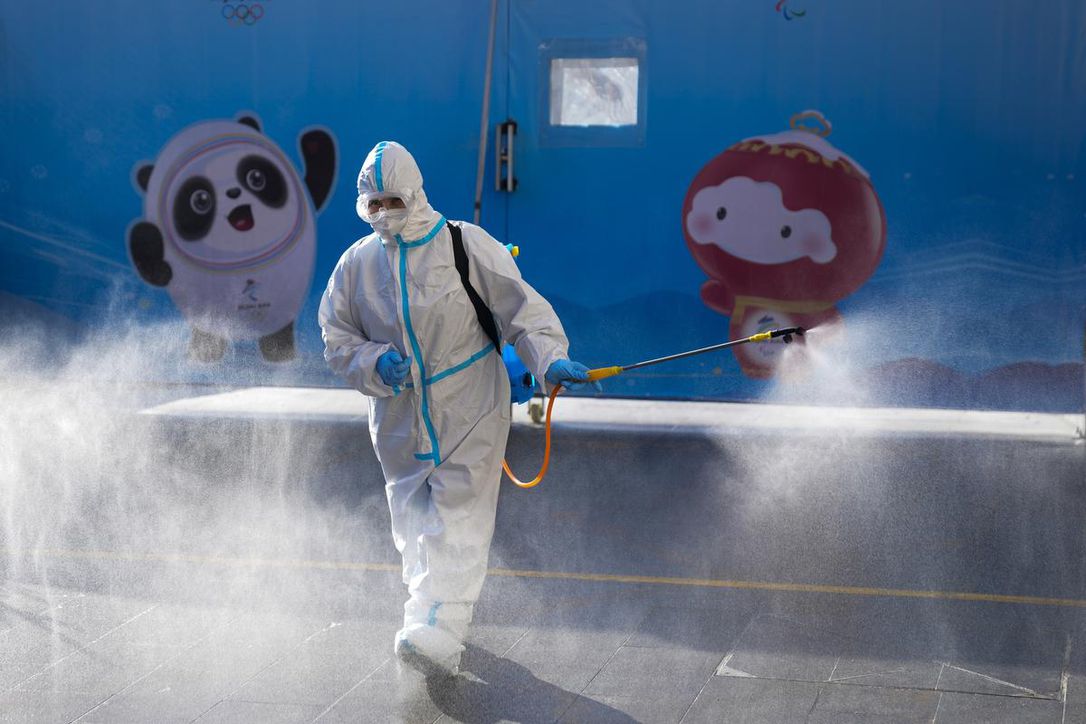"Many new protective procedures were set in place during the 2022 Beijing Winter Olympics, to minimize the spread of COVID."-- Jif dillemuth, 9th grade
This Winter Olympics was the first games on schedule since the start of COVID. However, COVID was still an obstacle. The delayed Summer Olympics in 2020, ended with a surge of cases. So how did Beijing handle the challenge? Many new protective procedures were set in place during the 2022 Beijing Winter Olympics, to minimize the spread of COVID. The results were successful, as the International Olympic Committee (IOC) reported the rate of infection stayed at 0.01%. But what was the cost of protecting this huge event?
When they weren’t competing or training, athletes mostly stayed in their rooms in one of the three Olympic village sections or “bubbles” organized by sport. The three sections were located in the Chaoyang district in central Beijing, Yanqing, 75 kilometers from Beijing’s city center, and Zhangjiakou, 75 kilometers from Beijing. High-speed trains offered transportation from one to the next. The whole Olympic village, also referred to as the Olympic bubble, including all three sections, was about the size of a small city.
A competitor’s worst fear in Beijing’s Olympics was to test positive. They would be stripped of their hopes to compete and sent to an isolation hotel, a separated place made specifically for asymptomatic people. If they were symptomatic for COVID then they would be taken to a hospital. Before their flight to Beijing there was a requirement of testing negative twice. When the athletes first arrived they were tested with a nasopharyngeal (throat) swab and afterwards were tested for COVID daily. Some athletes thought Beijing’s strict policies were a good call, while others disagreed. “So how strict Beijing is, it’s just really another competition for us,” Canadian figure skater Keegan Messing stated in TIME’s article, “What the World Can Learn from China’s COVID-19 Rules at the Winter Olympics.”
Testing was not the only precaution Beijing took. Food preparation took a sci-fi twist in the Olympic village, as food was delivered and prepared by robots. Robots resembling arms descended from the ceiling to the tables holding bowls of noodles and other food. Other robots served coffee and other drinks from their venues. All food was available to order with a scan of a QR code from a phone. But even with the advanced features of the cafeteria, it might've made it hard to enjoy with the smell of the huge amount of trash kept in temporary sites inside the Olympic bubble to avoid contact with Beijing’s citizens.
When they weren’t competing or training, athletes mostly stayed in their rooms in one of the three Olympic village sections or “bubbles” organized by sport. The three sections were located in the Chaoyang district in central Beijing, Yanqing, 75 kilometers from Beijing’s city center, and Zhangjiakou, 75 kilometers from Beijing. High-speed trains offered transportation from one to the next. The whole Olympic village, also referred to as the Olympic bubble, including all three sections, was about the size of a small city.
A competitor’s worst fear in Beijing’s Olympics was to test positive. They would be stripped of their hopes to compete and sent to an isolation hotel, a separated place made specifically for asymptomatic people. If they were symptomatic for COVID then they would be taken to a hospital. Before their flight to Beijing there was a requirement of testing negative twice. When the athletes first arrived they were tested with a nasopharyngeal (throat) swab and afterwards were tested for COVID daily. Some athletes thought Beijing’s strict policies were a good call, while others disagreed. “So how strict Beijing is, it’s just really another competition for us,” Canadian figure skater Keegan Messing stated in TIME’s article, “What the World Can Learn from China’s COVID-19 Rules at the Winter Olympics.”
Testing was not the only precaution Beijing took. Food preparation took a sci-fi twist in the Olympic village, as food was delivered and prepared by robots. Robots resembling arms descended from the ceiling to the tables holding bowls of noodles and other food. Other robots served coffee and other drinks from their venues. All food was available to order with a scan of a QR code from a phone. But even with the advanced features of the cafeteria, it might've made it hard to enjoy with the smell of the huge amount of trash kept in temporary sites inside the Olympic bubble to avoid contact with Beijing’s citizens.
But the execution and enforcement of all of these precautions wouldn’t be possible without the help of around 19,000 volunteers. The local volunteers stayed away from home for up to two months also staying an extra twenty-one days after, to quarantine, before going back, sacrificing their Lunar New Year to spend in the bubble instead of with family. Most volunteers repeated tasks like counting participants and disinfecting surfaces.
Beijing’s rules might have been strict on everyone involved and took a lot of preparation for the about two week event, but its prevention of COVID’s spread turned out great. Compared to Tokyo’s Summer Olympics, which were followed by a surge of cases, Beijing’s games kept the cases under control. Although Japan and the IOC claimed the Summer games and surge weren't connected. From the giant Olympic bubble to robots, there is no doubt that this Olympics was a strange one.




